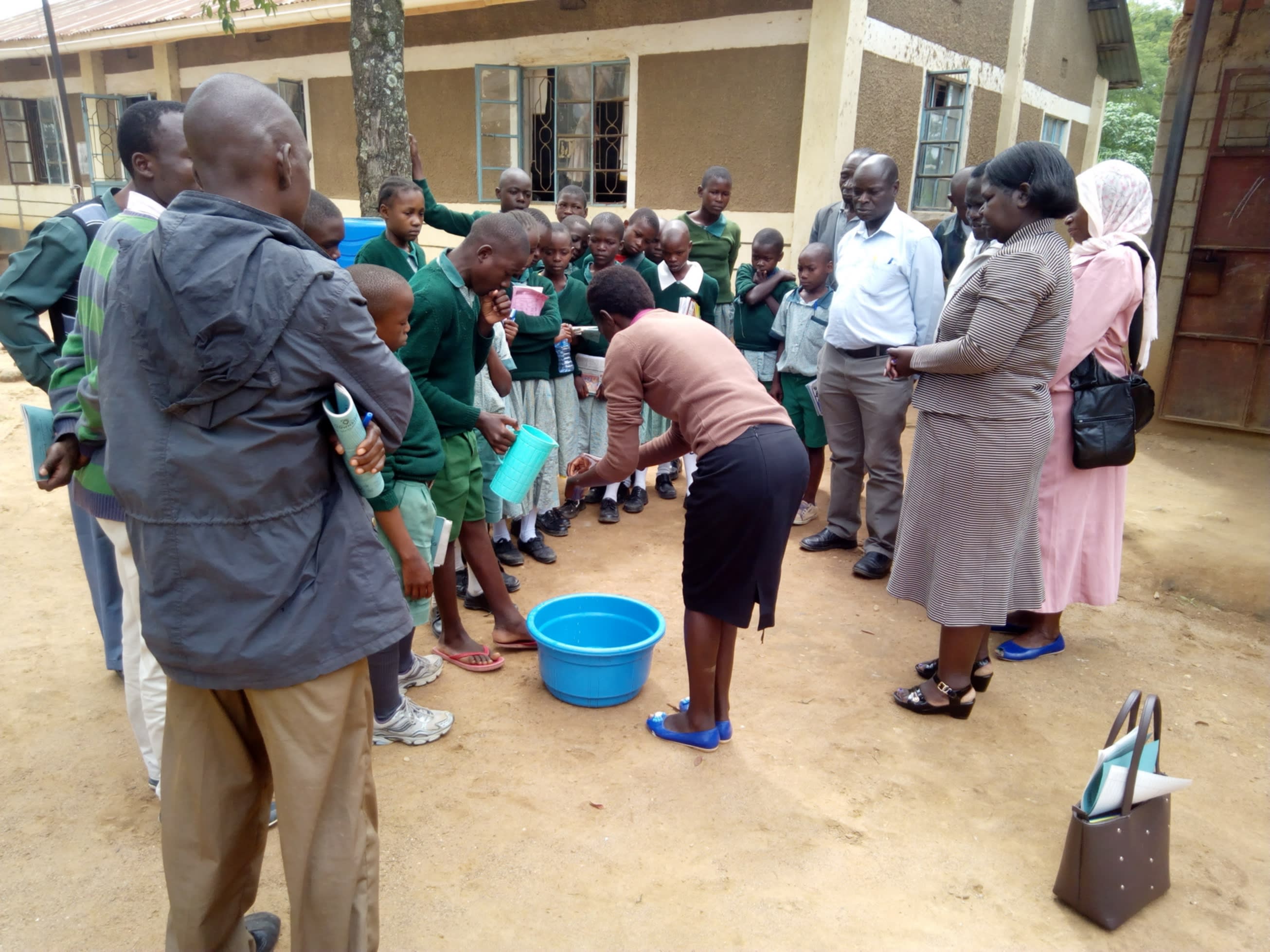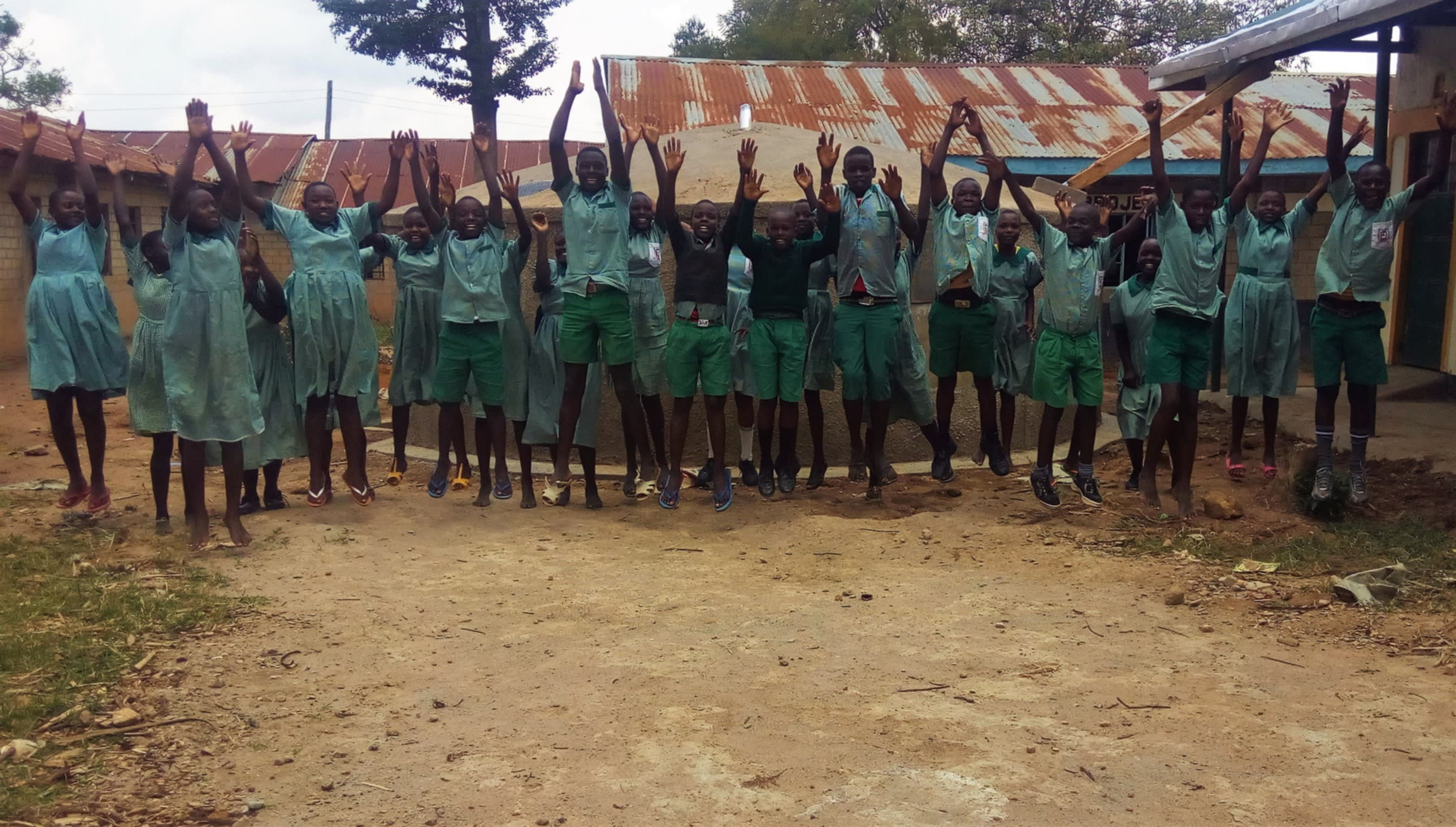This project is a part of our shared program with Western Water And Sanitation Forum (WEWASAFO). Our team is pleased to directly share the below report (edited for clarity, as needed).
Welcome to the School
Eshilakwe Primary School was started in the year 1959 by African Church of Jesus Christ Kenya (ACJK). The school now has a total student enrollment of 847. With regard to the teaching staff, 11 are employed by the Teachers Service Commission (TSC) while four teachers are employed by the Parents Teachers Association (PTA), and the school has employed three of their own support staff.
(Editor's Note: While this many people may have access on any given day, realistically a single water source can only support a population of 350-500 people. This community would be a good candidate for a second project in the future so adequate water is available. To learn more, click here.)
A normal school day begins at 6am when students start walking to school. Lower classes commence compound cleaning at 7am before the flag raising ceremony. The master on duty addresses the pupils and invites other teachers to brief the pupils on what is expected of them. Regular classes begin at 8am and end at 4:30pm. At 4:30pm pupils are required to stay for clubs and games. There are students who are good at poetry, drama, football and many other things, but everyone should participate and find their place. At 5pm they all assemble and are dismissed; they then walk back home to help their parents with chores.
Water Situation
Being an election year, one of the aspirants donated a plastic tank with a capacity of 5,000 liters, but this is nowhere near enough for the daily use of 847 students. Girls and boys are asked to fetch clean water from a spring that's about two kilometers away. But since this spring is so far away, the chances students stop somewhere else to fill their containers is high. There's no way to ensure that the water in each container is clean.
A lot of time is wasted, which in turn negatively affects the academic performance of pupils. Numerous cases of water-related diseases have also been reported. Headteacher Josephat Kihima told us, "The pupils waste a lot of their precious time queuing in order to access water from the spring, which is a problem because the community members have to fetch water first. Reported cases of water-related diseases such as dysentery and typhoid have disturbed most of us - we really need an intervention."
Sanitation Situation
The school sanitation situation also needs to be addressed. The school has a total number of 11 latrines for teachers, male students and female students. This means one door serves over 50 pupils! All of these facilities are filthy because there isn't enough water to keep them clean. Some latrines have broken doors that cannot be locked and back open, compromising students' privacy. The school has one hand-washing station, but it is only for teachers.
Plans: Hygiene and Sanitation Training and Hand-Washing Stations
Training will be held for two days. The facilitator will use PHAST (participatory hygiene and sanitation transformation), ABCD (asset-based community development), CTC (child to child), lectures, group discussions, and handouts to teach health topics and ways to promote good practices within the school. The CTC method will prepare students to lead other students into healthy habits, as well as kickstart a CTC club for the school. This CTC club will oversee the new facilities, such as hand-washing stations, and make sure they are kept clean and in working condition. The two hand-washing stations will be delivered to the school, and the club will fill them with water on a daily basis and make sure there is always a cleaning agent such as soap or ash.
Plans: VIP Latrines
Two triple-door latrines will be constructed with local materials that the school will help gather. Three doors will serve the girls while the other three serve the boys. And with a new source of water on school grounds, students and staff should have enough to keep these new latrines clean.
Plans: Rainwater Catchment Tank
A 50,000-liter rainwater catchment tank will help alleviate the water crisis at this school. The school will also help gather the needed materials such as sand, rocks, and water from the spring for mixing cement. Once finished, this tank can begin catching rainfall that will be used by the school’s students and staff. Students will no longer have to leave their school in search of water.
We and the school strongly believe that with this assistance, standards will significantly improve. These higher standards will translate to better academic performance!

 Rainwater Catchment
Rainwater Catchment
 Rehabilitation Project
Rehabilitation Project


































